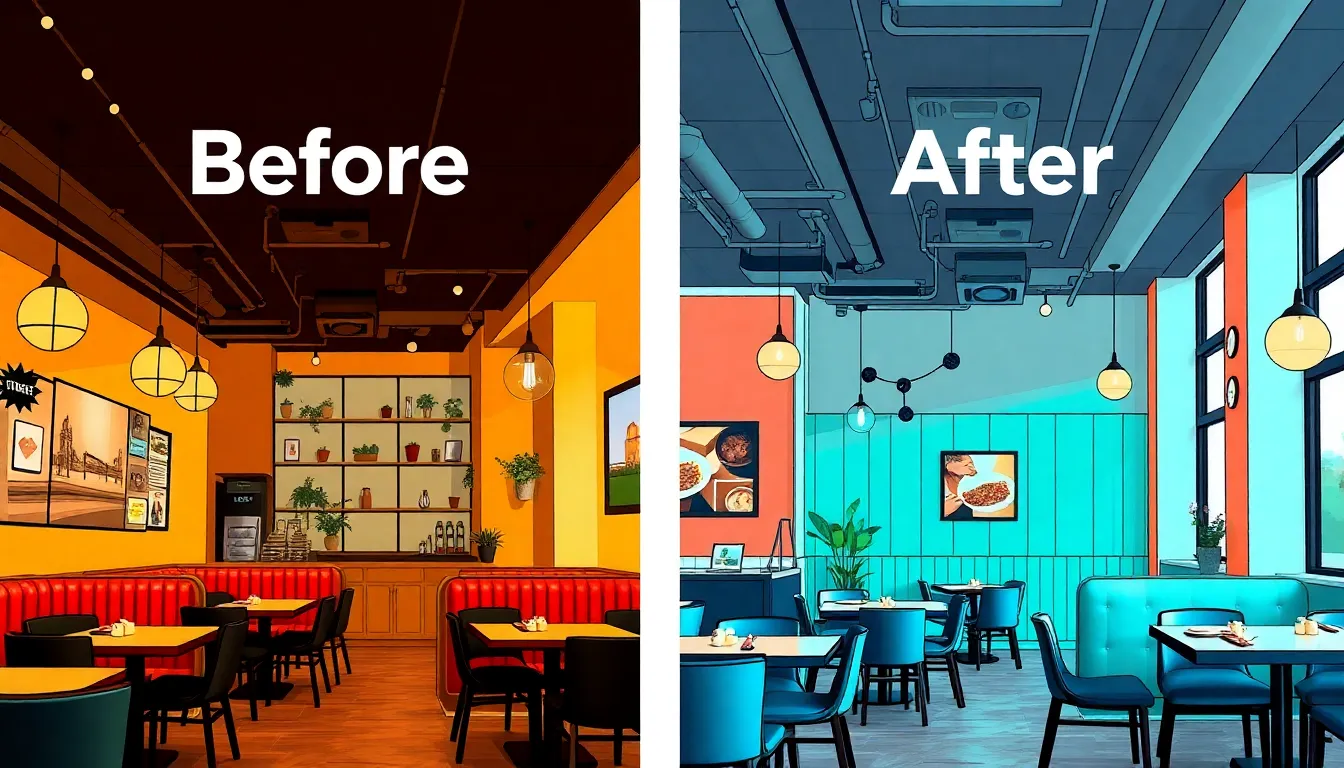Table of Contents
ToggleWhen it comes to culinary chaos, few shows capture the drama quite like Kitchen Nightmares. Each episode features a struggling restaurant on the brink of disaster, with Gordon Ramsay swooping in like a culinary superhero. But what happens after the cameras stop rolling? Surprisingly, many of these once-floundering establishments transform into thriving hotspots, proving that even the most nightmarish kitchens can rise from the ashes.
Overview of Kitchen Nightmares
“Kitchen Nightmares” is a reality TV show featuring chef Gordon Ramsay. Each episode showcases struggling restaurants in critical situations. Ramsay’s approach emphasizes identifying core issues, ranging from poor management to outdated menus. Transformations often unfold over a short production period, leading to dramatic improvements.
Viewers witness chaotic kitchens and frustrated staff. Ramsay’s tough love and expertise guide owners through significant changes. Changes typically involve menu revamps, decor updates, and staff training. Restaurants often see immediate benefits post-revamp, increasing customer satisfaction and sales.
Success stories abound, with many establishments thriving after the show. Data reveals that more than 60% of restaurants that appeared on “Kitchen Nightmares” experienced lasting improvements after airing. Several notable success stories include The Olde Stone Mill, Sam’s Mediterranean Kabob Room, and Dale’s Seafood. Each of these examples highlights effective strategies implemented to enhance dining experiences and operational efficiency.
Sustainability is another crucial aspect of these transformations. Some restaurants implement ongoing training and regular menu updates to maintain relevance in a competitive market. Adaptability often contributes to long-term survival, particularly in the food industry.
Critical feedback and ongoing support are vital for the success of these dining establishments. By embracing change, owners build resilience and foster a stronger connection with their community. Ultimately, “Kitchen Nightmares” embodies the potential for redemption in the world of culinary endeavors.
Notable Success Stories

Numerous restaurants transformed through Gordon Ramsay’s guidance demonstrate the potential for revitalization in the industry. Several remarkable examples illustrate effective strategies and long-lasting impacts.
Restaurant Makeovers
Chef Ramsay’s interventions often begin with major aesthetic transformations. Owners face a reality check, learning that decor greatly affects customer perceptions. In Sam’s Mediterranean Kabob Room, for instance, a fresh color palette and modern furniture attracted a younger clientele. The Olde Stone Mill showcased a complete menu overhaul alongside the decor, enticing diners with innovative dishes. Results consistently indicate increased foot traffic, showcasing how visual appeal contributes to a restaurant’s success.
Lasting Changes in Management
Management adjustments frequently follow Ramsay’s culinary revamps. Effective staff training becomes a priority, fostering teamwork and communication. Dale’s Seafood represents this shift; the owner implemented regular staff meetings to discuss challenges and successes. Improved management practices, including clearer roles, boosted morale and efficiency. Data shows that restaurants addressing managerial issues experience better outcomes, affirming that strong leadership is crucial for long-term success.
Common Themes in Success
Successful transformations in “Kitchen Nightmares” reveal recurring themes that contribute to revitalizing struggling restaurants. Effective leadership and menu revamps frequently emerge as critical factors in these success stories.
Effective Leadership
Strong leadership stands out as a cornerstone in achieving lasting improvements. Owners actively engage with their staff, ensuring clarity in roles and responsibilities. Regular team meetings, like those at Dale’s Seafood, foster communication, encouraging employees to share their challenges and victories. Motivated staff members contribute to a positive work environment, which ultimately enhances customer experiences. Effective leadership creates a culture of accountability, enabling restaurants to build resilience and adapt to changing demands.
Menu Revamps
Menu revamps play a pivotal role in attracting new customers and retaining regulars. Fresh, innovative dishes entice patrons, as demonstrated by The Olde Stone Mill’s successful culinary overhaul. Regular updates ensure that offerings stay relevant and appealing, helping restaurants differentiate themselves in competitive markets. Sam’s Mediterranean Kabob Room illustrates the impact of incorporating seasonal ingredients, attracting a younger clientele drawn to modern flavors. A thoughtfully updated menu can significantly boost customer satisfaction and drive sales, reinforcing the importance of culinary creativity.
Challenges Faced by Reopened Restaurants
Reopened restaurants often encounter significant challenges post-transformation. Competition within the food industry remains fierce, making it difficult for new customer bases to establish loyalty. Financial stability proves elusive for many, as initial investments in renovations may not yield immediate returns.
Staff turnover constitutes another pressing issue, as trained employees may seek opportunities elsewhere after a management overhaul. Maintaining morale among remaining staff becomes paramount for sustaining improvements in service quality. Implementing effective communication strategies helps address these concerns, keeping team members engaged.
Menu sustainability also presents an ongoing challenge. Artisan dishes may attract initial interest but require frequent updates and adaptations to retain consumer interest. Restaurants face pressure to innovate while managing food costs, which can lead to potential losses if miscalculations occur.
Customer expectations frequently shift, requiring restaurants to adapt quickly to emerging trends. Social media plays a crucial role in shaping these expectations, compelling establishments to enhance their online presence and reputations. Negative reviews can severely impact business, making proactive engagement with customers essential.
Maintaining consistency in food quality represents a universal obstacle. Restaurant owners must ensure that every dish meets elevated standards, which can be difficult as they scale operations. Training systems must evolve alongside menu updates, ensuring staff are equipped to meet customer needs.
Navigating these challenges demands ongoing commitment from restaurant owners. Owners need to consistently reassess their strategies, focusing on areas that require improvement, and embracing flexibility in their operations. Overcoming these obstacles significantly impacts long-term success and growth in the industry.
The transformations witnessed on “Kitchen Nightmares” illustrate a remarkable journey from despair to success. Each restaurant’s revival underscores the importance of effective leadership and innovative culinary strategies. With Ramsay’s guidance, owners learn to embrace change and adapt to evolving consumer expectations.
The success stories serve as a beacon of hope for struggling restaurateurs, emphasizing that with the right mindset and commitment, revitalization is possible. While challenges remain in the competitive food industry, the lessons learned from these transformations prove invaluable. Ultimately, the show highlights that resilience and creativity are key ingredients for long-term success in the culinary world.





